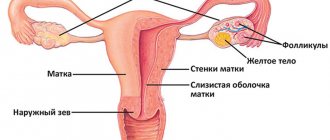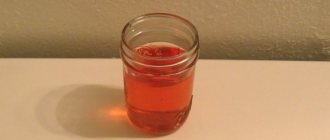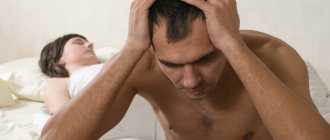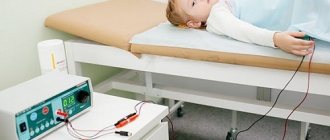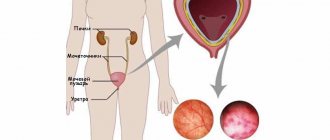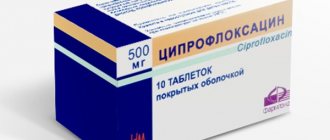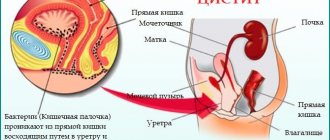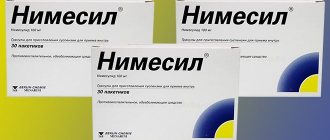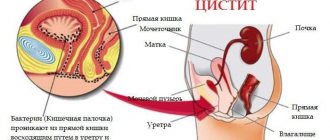Cystitis, which occurs very often in medical practice, is an inflammatory process in the bladder. The cause of the disease may be bacteria that easily penetrate the genitourinary organs. Some patients may experience pain in the lumbar region along with the typical symptoms of cystitis. What symptoms of cystitis are considered typical, and why the lower back hurts with cystitis, this article will tell you.
Clinical picture
Acute cystitis is accompanied by a number of typical symptoms:
- burning or itching during urination;
- frequent, practically ineffective (that is, very little urine is produced) urination;
- pain in the groin and suprapubic area, pain in the urethra;
- cloudiness of the urine and the presence of blood in it;
- in case of severe disease - increased temperature, nausea, and so on.
Pain
One of the common signs of the disease is pain localized in the perineum and lower abdomen. The intensity of pain varies, in approximately 10% of patients the course is painless and there is only distension and minor discomfort, which often go unnoticed. In addition, unpleasant sensations can spread to the back (cystitis radiates to the lower back), while the pain is a consequence of irritation of the nerve endings by the products of the inflammatory process.
The pain may be accompanied by fever, weakness and headache. However, if the patient's immunity is slightly reduced, these symptoms may not occur.
Possible complications
In the absence of treatment, the pathology may become chronic and infection may develop with the development of an inflammatory process in the renal structures. Pathogenic bacteria often affect the urethra. Urethritis develops - chronic or acute inflammation of the urethra.
One of the dangerous complications is pyelonephritis, which precedes renal failure. The progression of this chronic bilateral pathology provokes impaired renal function, decreased specific gravity of urine, and arterial hypertension.
Lower back pain
So, can lower back pain occur with cystitis? Pain in the lumbar region can also occur during a complicated course of the disease, when the kidneys are involved in the inflammatory process, that is, the infection has taken an ascending path.
In addition, if the anatomical feature of the patient is a large diameter of the ureters, a reverse flow (to the kidneys) of urine containing infectious agents from the bladder may be observed. As a rule, in these cases, patients are diagnosed with pyelonephritis - the main reason why the lower back is pulled during cystitis. This pathology is diagnosed quite often.
Features of symptoms in pregnant women
Cystitis develops in any trimester of pregnancy. Bladder inflammation is caused by displacement of internal organs due to the constantly increasing weight of the fetus, hormonal fluctuations, and an expanded network of blood vessels. This leads to prolonged stagnation of urine in the bladder - a favorable environment for the active growth and reproduction of bacteria.
Often a woman does not associate the characteristic symptoms with lower back pain, since it often accompanies pregnancy. But often pain in the lower back disappears immediately after the bacteria in the bladder are destroyed.
First aid
In any case, treatment of cystitis is the task of a specialist. Self-medication in this case can lead to disastrous results, especially when cystitis causes lower back pain. But before going to the doctor, you can try to alleviate your condition by doing the following:
- adhere to bed rest, maintaining complete rest and protecting yourself from stress;
- if the pain has spread to the abdomen and lower back, you can apply a warm compress to the abdomen;
- the use of antispasmodics (“No-spa”) or their combination with ordinary painkillers is allowed;
- if you have cystitis, you should limit the consumption of fatty foods, lemonades and spicy foods;
- In order to relieve pain, you can use the folk method - drink chamomile tea.
The goal of therapy is to eliminate the causative agent of infection. However, only a doctor can choose the right antibacterial fast-acting medicine for cystitis and its dosage, since self-medication in this case is fraught with a worsening of the condition and the spread of infection throughout the body.
What is cystitis and why does it appear?
Cystitis is an inflammation of the bladder. It more often affects the female body. This is explained by the structural features of the urinary system. In women, the urethra is wider and shorter than in men. Therefore, it is much easier for infections to get here. According to statistics, from 25% to 40% of women worldwide experience cystitis.
The cause of the development of an inflammatory process in the bladder may be the following:
- hypothermia in the pelvic area;
- poor hygiene;
- damage to the mucous membrane of the bladder;
- too fatty and spicy foods;
- sex without a condom;
- sedentary lifestyle;
- chronic venereal diseases;
- lack of vitamins;
- frequent constipation;
- hormonal imbalances.
The causative agents of the disease are Escherichia coli, enterococcus, staphylococcus and other similar bacteria. One of the common causes is Trichomonas vaginalis. If the doctor has diagnosed non-infectious cystitis, this means that it was provoked by chemicals (medicines) that irritated the mucous membrane.
To prevent the development of cystitis, women are advised to follow a few simple rules:
- change tampons or pads more often during menstruation;
- observe the urination regime (if possible, do not tolerate the urge);
- exclude transitions from anal to vaginal sex;
- do not often wear tight-fitting synthetic underwear;
- use panty liners;
- After defecation, you should wipe in the opposite direction from the vagina.
Diagnostics
If signs of cystitis occur, the patient can consult a urologist or therapist; women with suspected cystitis, especially during pregnancy, can consult a gynecologist. If your lower back hurts due to cystitis, you can safely contact a nephrologist.
Diagnostic measures begin with the collection of complaints and anamnesis. In this case, the patient must remember after which the first signs of the disease appeared, for example, the lower back was blown out and cystitis suddenly appeared. After this, the doctor conducts a visual examination with palpation (pressure on the bladder will be painful) and tapping in the lumbar region (it will be painful with pyelonephritis).
Then the patient is asked to undergo a series of studies:
- OAM (urine will contain red blood cells, mucus, leukocytes, bacteria, urates significantly higher than normal);
- urine culture with determination of flora sensitivity to antibiotics and examination of smears from the urethra and vagina (in women);
- cystoscopy, cystography;
- Ultrasound of the genitourinary organs, including the kidneys, if lower back pain occurs with cystitis;
- blood tests (general and biochemical).
Therapy
Hospitalization for uncomplicated cystitis, as a rule, is not required, the only exceptions being cases of severe pain and acute urine retention that cannot be eliminated by conventional means. Etiotropic therapy consists of taking antimicrobial drugs: nitrofurans, cephalosporins, fluoroquinolones, penicillins are used less frequently. This or that remedy, including a fast-acting cure for cystitis, is always prescribed taking into account the sensitivity of pathogenic microbes. The course of such treatment usually lasts 5-7 days. If the cause of cystitis lies in infection with fungi or viruses, the patient is prescribed treatment appropriate to the pathogen.
To relieve pain (including in the lumbar region), antispasmodics and NSAIDs (in tablets or injections) are prescribed. In addition, for the same purpose, you can use a heating pad, which is applied to the lower abdomen. The heat emanating from the heating pad also has an antispasmodic effect, due to which the urethra and ureters relax and expand, and the outflow of urine is restored. Warm baths, which should be taken while sitting, or foot baths with an exposure of 20 minutes have the same effect. and rectal anti-inflammatory suppositories based on belladonna.
When treating an illness in women, patients are recommended to abstain from sexual relations and mandatory maintenance of hygiene, in addition, measures are taken to normalize the microbiocenosis of the vagina.
For chronic cystitis, therapy includes restoring adequate urine outflow (elimination of prostate adenoma and narrowing of the urethra, etc.), which is achieved through the use of anti-inflammatory medications and products based on plant extracts (Cyston, etc.). In addition, all chronic infectious foci (caries, chronic tonsillitis, etc.) must be sanitized. In the treatment of cystitis in men, the use of herbal medicine and herbal uroseptics is indicated.
Treatment methods
When deciding on treatment tactics, the doctor takes into account the form of cystitis, its stage and the degree of tissue affected by inflammation. The type of pathogenic bacteria and their sensitivity to antibacterial drugs matter. When infected with pathogens of sexually transmitted diseases, a venereologist takes part in the treatment.
Drug therapy
Often the results of laboratory tests have to wait several days, so the patient is immediately prescribed broad-spectrum antibiotics. These are derivatives of 8-hydroxyquinoline, semisynthetic penicillins, macrolides. But most microorganisms that were previously sensitive to their action (especially E. coli) have developed resistance. After receiving the culture results, the therapeutic regimen is adjusted. It usually includes drugs with the active ingredient fosfomycin (Monural). A single use of the drug is sufficient to completely destroy microorganisms.
NSAIDs in tablets or ointments are used only for severe lower back pain. All symptoms, including fever, disappear almost immediately after antibiotic therapy. Patients may be advised to take vitamins and immunostimulants to prevent relapses of cystitis.
Diet
You should exclude from your diet foods that change the acidity of urine, which irritates the mucous membrane of the bladder. These are semi-finished products, smoked meats, baked goods made from butter and puff pastry, coffee, alcohol, chocolate. It is necessary to limit or completely avoid fried, fatty, spice-rich foods.
During therapy, the daily menu should consist of lean meat, steamed or boiled vegetables, and fresh fruits. You need to include low-fat meat or fish broths, dried white bread, and cereal porridges in your diet. Cottage cheese with honey, biscuits, and dried fruits are suitable as desserts.
Phytotherapy
As additional therapy, medications with phytoextracts of medicinal plants are prescribed - for example, Canephron or Phytolysin. They have a complex effect on the bladder - anti-inflammatory, decongestant, analgesic. Medicines are available in the form of solutions, dragees, and pastes for dilution in water. They contain plant extracts that reduce the severity of all symptoms of cystitis due to diverse therapeutic activity:
- antispasmodic;
- diuretic;
- antimicrobial;
- antiseptic.
Herbal medicine is not a substitute for taking antibiotics. Plant extracts have only a bacteriostatic effect, that is, they inhibit the proliferation of pathogenic bacteria. These drugs also cannot reduce body temperature or eliminate lower back pain.
Folk remedies and recipes
Cranberry juice is the most common folk remedy for the treatment of cystitis. A glass of fresh or defrosted berries is crushed, the resulting juice is poured into a non-oxidizing container. Add 1 liter of water and a couple of tablespoons of sugar to the dry residue, place the pan on low heat and simmer for 10 minutes. Cool, filter, mix with juice and drink 0.3 cups 3 times a day after meals.
Cranberry juice.
Milk with propolis is good for cystitis, fever, and back pain. To prepare the drink, boil a glass of low-fat milk, and then pour propolis into it at the tip of a knife and stir. Cool and drink throughout the day.
Propolis with milk.
Physiotherapy
Gymnastics for cystitis in women is an effective means to combat the disease. There is a special set of Kegel exercises. These classes increase the effectiveness of the therapy and prevent the process from becoming chronic. The exercises involve squeezing the perineal and vaginal muscles as strongly as possible for 2-3 seconds, and then relaxing them.
In addition, you can do:
- “Scissors” and “bicycle” - these exercises activate and strengthen the muscles of the bladder, inhibit pathogenic bacteria.
- “Cobra” - lying on your stomach, palms down at the level of your forearms. The patient raises his torso and slowly bends. Then take a deep breath and return to the starting position. The number of repetitions is 8-10.
- “Grasshopper” - position on your stomach, lying with your arms outstretched to the sides. Tighten your buttock muscles as much as possible and, raising your torso, hold in this position for 30 seconds. Number of repetitions - 6.
- In a standing position, the patient clasps his hands together, lifting them up, and bends his back. Repeat the movement 8 times. Then the body is tilted to the right and left, also repeating it 8 times on each side. After this, perform 10 body rotations and 15 squats.
Folk recipes
In the case of cystitis, folk remedies are an addition to the main therapy and must be discussed with the doctor. The principle of this therapy is simple: you need to drink more and, accordingly, urinate more. In this case, water can be replaced with herbal decoctions or cranberry juice. After several such “washes,” the pain weakens, the condition improves, and the color of the urine gradually returns to normal.
Doctors advise reviewing your diet, replacing regular meals with soups and liquid cereals, and drinking a glass of water at least twice an hour. Anti-inflammatory and diuretic herbal preparations are quite effective.
Preventive measures
To prevent cystitis, the following rules must be followed:
- maintaining hygiene (sexual and personal);
- regular bladder emptying;
- avoid hypothermia;
- during catheterization and endovesical examinations, observe the rules of asepsis;
- stimulation of the immune system.
In order to prevent the spread of infection to the kidneys and, therefore, prevent the occurrence of lower back pain and chronicity of the process, you should immediately consult a doctor if symptoms occur and then carefully follow all his instructions, in addition, do not interrupt the course before the due time.
Prevention
Cystitis is a pathology that causes a lot of unpleasant sensations, and with unqualified treatment it leads to relapses and a chronic course. The development of the disease can be prevented by following simple recommendations from doctors.
To do this you should:
- Healthy food;
- do not be nervous;
- observe drinking regime;
- do not expose the body to hypothermia;
- treat inflammatory diseases;
- maintain personal hygiene.
You need to avoid tight or tight underwear. It disrupts blood circulation in the pelvic organs and promotes the development of stagnant processes.
It is also important to empty the bladder on time, not to delay urination, and to provide the body with sufficient and regular physical activity. As a preventative method, visit a urologist annually.
